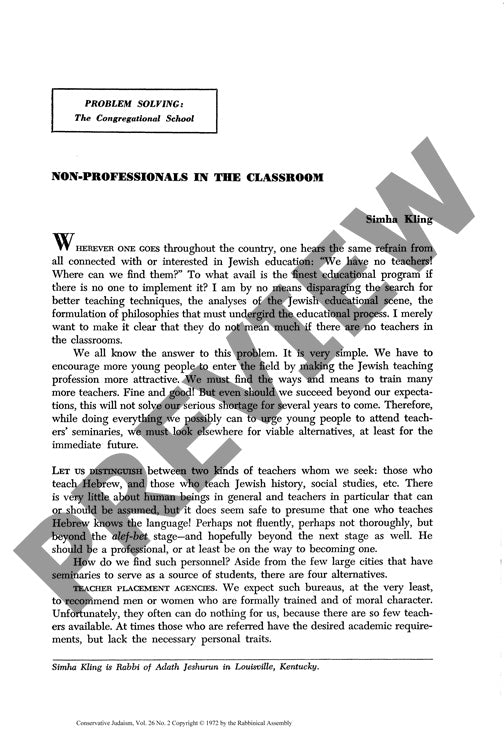Non Professionals in the Classroom
Couldn't load pickup availability
Jewish educational institutions, particularly Hebrew schools in smaller communities, face a persistent shortage of qualified teachers - yet innovative solutions exist beyond traditional recruitment channels. By analyzing direct implementation experiences across multiple institutions, this research reveals that local community members and advanced Hebrew students can effectively fill teaching gaps when given proper support systems. While established sources like placement agencies and Israeli exchange programs provide limited options, carefully selected non-professional instructors achieve notable success in both Hebrew language and Jewish studies instruction. Inter-congregational teaching programs and structured mentorship approaches demonstrate particular promise, though they require increased administrative oversight and training investment from religious leadership. The practical problem-solving methodology distinguished between Hebrew language instruction and Jewish history/social studies teaching, identifying unique challenges and solutions for each domain. Evidence shows that strong pedagogical skills and dedication to Jewish education, combined with systematic support structures and ongoing professional development, often compensate for limited formal training. This approach offers smaller Jewish communities a viable immediate solution to their staffing challenges while maintaining educational quality.

More Information
-
Physical Description
-
Publication Information
Published 1972
ISBN
-
Publication Credits

